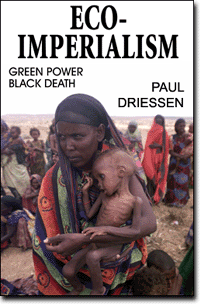by Deroy Murdock
Scripps Howard News Service and National Review Online
September 2003
CANCUN, Mexico, September 2003 – “Look at how they’ve destroyed this place,” says Gustavo Herrera, a local cab driver.
Herrera slowly shakes his head back and forth as he scans the barricade the federales, or Mexican federal police, erected at the northern end of this resort city’s Hotel Zone. It was installed to protect the World Trade Organization’s Fifth Ministerial Conference from violent, globophobic protesters. The rust-colored chain-link fence and metal supporting beams now are yanked away from the cops, as if a locomotive ripped through the fortification while on a rush-hour commuter run. Steel snarls outward in some spots, downward in others. Just beyond the barrier, scores of federales and other security personnel mill about while a black stone sculpture of Chac mol, the Mayan rain god, looks on, agape.
“Pure destruction,” says Nellie Gomez, a local resident. “Nothing more.” She speaks quietly, as if more shocked than angered by what she sees. In contrast, the sound of tangled metal hitting the pavement pierces the sultry evening air. Gomez blames the radicals for this devastation. “The demonstrators did this,” she says. “All the police are trying to do is protect.” She adds that she’s never seen such a thing. “Here, the people are peaceful.”
Beneath lush coconut palm trees, bits of broken glass make the asphalt sparkle. Heavy, concrete cinder blocks that reinforced the base of the multi-layered fence now lie around like thrown dice. The gray and black ashes of spent roadside flares still emit an eerie scent that says something ugly just happened.
A few hours earlier on Saturday, eyewitnesses say, some 2,000 anti-trade militants filled Paseo Kulkulkan where it flows from modest downtown Cancun into the lush Hotel Zone. They used shopping carts, now abandoned down an adjacent residential street, to wheel rocks to the ramparts. After they threw stones at police, they built battering rams, at one point coupling a fallen palm tree with a shopping cart to boost it power. They also used sticks, ropes and their bare hands to tear a hole two car lanes wide through the barrier.
The leftists’ damage is despicably impressive. But these barbarians never passed the gates. After finishing their damage, they sat down in the street, marveled at their criminal handiwork, then dispersed.
These radicals sprayed graffiti all over the area, covering street signs, roadside markers and even curbs.
“Fight kapitalism,” says one graffito. The Spanish words for “Anarko-punk Movement” blacken a sidewalk. Elsewhere, “WTO kills farmers” and “Fuck the WTO, we’re winning” greet visitors. Most ominously, hammers and sickles are sprayed in red in numerous spots.
On the moist grass beside the fence, a cardboard box for 18 eggs holds two of them, still untossed. Just above their white shells, a cloth banner says in Spanish: “Throw eggs at the WTO.” This has a double meaning. Roughly translated: “Show testicles to the WTO.”
“It’s sad, very sad, what our world is coming to,” says Jose Roche, who works in a store at the Hotel Oasis. “This place was trashed by people who can’t manage a protest. This scandal is very costly for us citizens.”
“It’s painful, too, because this gets us nowhere,” he continues. “The saddest thing of all is that this was done by outsiders, and tourists might think that this defines Cancun’s people. That’s what’s so painful about this.”
But an Italian anti-WTO activist disagrees.
“Cancun’s image is not hurt by these protests, but by the official meeting here,” says the curly-haired, 23-year-old young man who prefers anonymity. “The newspapers denounce this violence, but not the violence that kills millions of people from hunger.”
Another young Italian demonstrator who simply calls herself Margarita seems even more sympathetic to this disarray. She says the destruction “is bad luck, but I understand it.” She adds: “I hope people will understand why they did this – – to defend everyone’s rights to respond to a conference that is such an embarrassment for what it does to the people of Mexico and other poor countries.”
Andrew Cox sits beside Margarita on a curb. With stubble and sandy blond hair, he looks as if he just surfed in from his hometown, Burleigh Heads, Australia. “No uranium. No weapons. No waste. Reclaim the future,” his light green shirt declares.
“It’s symbolic,” he says of the busted barricade. “You can build your fences, and we can tear them down.”
Asked if he worried that news of this violence might hurt his cause, Cox concedes, “That disappoints me,” but adds: “My favorite protests have always been music and dancing and to use creative avenues. But in this case, they built a really big fence, and it’s an exclusion zone. You’re there, and we’re here.”
Still, Cancun businessman Gustavo Miranda rejects this viewpoint.
“It’s one thing to protest,” he says, “but this is vandalism.”
